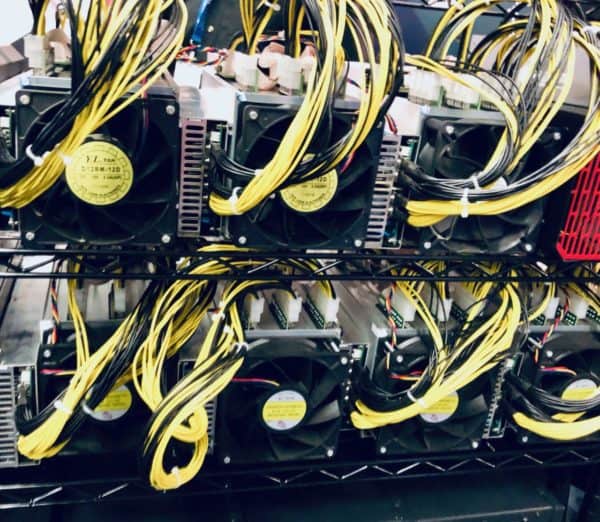As Bitcoin (BTC) continues to set new highs, it became clear to many people that the digital asset could serve as a hedge against the traditional financial system. This year, many well-known investors, including Stanley Druckenmiller (a hedge fund manager with a net worth of $4.4 billion) have changed their mind about Bitcoin in the current macro-economic environment.
Druckenmiller thinks Bitcoin could serve as a hedge against US dollar depreciation and the ever-rising American stock market.
Sampo, a Bitcoin analyst, points out that stil, “not everyone has changed their mind, though, and the seemingly ever-present nay-sayers are also back.” They note that a popular or common argument against BTC is that it wastes too much energy. Although it’s true that mining BTC (or other proof of work cryptos) requires a very large amount of electricity, “the argument that it is a waste of energy has been debunked,” Sampo (a guest author/analyst) writes in a blog post published by LocalBitcoins.
According to Sampo, Bitcoin is “the ultimate cost-efficient way to spend electricity, and … [crypto] mining minimizes wasted energy and increases the use of sustainable energy solutions.”
At present, 900 new Bitcoins are created each day or every 24 hours. New Bitcoins are minted by using computing power to solve very complex mathematical problems. This requires large amounts of electricity. In fact, the total energy consumption of the BTC network is about 77 terawatt-hours (at the time of writing). This is even more than the total energy consumption of developed nations like Switzerland and the Czech Republic, Sampo confirms.
But since the total value of the BTC network has now surpassed the “total value of most major banks,” it’s clear that “a lot of energy is needed to secure the network,” Sampo claims. They argue that “all this immense energy is used to secure the safest value network ever created [so] it’s not wasted.”
Sampo further noted that “in practice, what it means to secure the Bitcoin network [is that] new bitcoins are created by validating blocks, which also contain the transaction information of all transactions on the Bitcoin network.” At the beginning, when the genesis block was mined, this “could be done with computer processors, CPUs,” Sampo notes.
But GPUs (graphics processing units in PCs) were a lot more efficient in solving the mathematical equations. And after the BTC network gained a lot more recognition, and Bitcoin acquired more value, hardware companies began producing ASICs – which are “optimized to solve the equations involved in mining Bitcoin,” Sampo explained.
GPUs may still be used for mining purposes, however, it’s quite difficult or even impossible to do it “profitably as an individual,” Sampo notes. They confirm that the process was “commercialized and optimized years ago.”
They added that the total hash rate of the BTC network is around 131.791 TH/s – which is an “immense amount of computing power protecting the network from outside attacks since any significant threats would require 51%, the majority of the hashing power, to force changes into the network.”
Sampo compares this to the hash rate of a typical gaming PC. They point out that “this is all very hypothetical, but let’s say that the potential hash rate of a low to mid-tier PC is approximately 23 MH/s.” Then “dedicating the GPU of this PC to bitcoin mining would account for 0.000017% of the current total hash rate of the Bitcoin network.”
Using these numbers, of the 900 new Bitcoins, “the daily share of this setup would amount to 0.000153 bitcoin, or 15,300 satoshis, currently worth $3.60.” When we “reduce the mining pool fees and the price of the electricity needed for running the PC 24/7, [then we can see that] this operation would be unprofitable.” More than likely, this setup would never be able to recover the initial investment.
This suggests that mining might be possible for individuals, however, it may not be profitable. But we can also see that a massive amount of energy consumed “protects the network” and “profitable mining requires optimal hardware, and optimal mining conditions,” Sampo states.
They added:
“Optimized hardware equals optimized returns. Cheap electricity prices equal optimized returns. When these two conditions are met, an optimal environment for Bitcoin mining is created, and Bitcoin mining incentivizes electricity users to minimize wasted energy. In other words, the game theory of Bitcoin mining eliminates actors who waste energy….mining favors countries with cheap electricity which usually equates to countries that are struggling financially, such as Venezuela. Unfortunately for Venezuelans, the industry has recently been forced into the national pool and even the Venezuelan army has started mining bitcoin.”
Sampo argues that if it were a waste of energy, then “why would governments do it?”
They further noted:
“Mining bitcoin is not only for countries where cheap electricity is available everywhere. Cheap electricity sources exist all around the globe, and they are the future trend in bitcoin mining. …oil and gas fields are using their excess energy to mine Bitcoin. This way, they can reduce their carbon footprint by utilizing the previously wasted energy. The same is true for hydropower plants and since renewable energy is an inexhaustible source of energy, these solutions have huge potential in powering the Bitcoin network in the future.”


